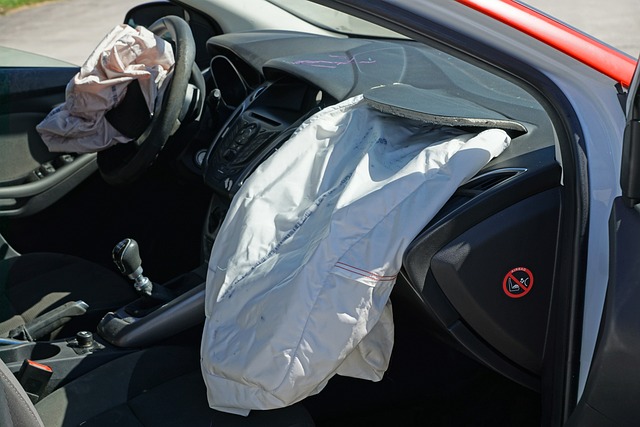Auto Insurance for High-Risk Drivers isn't standardized, requiring specialized policies for young drivers, those with traffic violations, or classic car owners. Key factors like age, driving history, vehicle type, and location impact premiums. Specialized insurers offer tailored coverage, including add-ons and discounts via defensive driving courses. Strict legal obligations exist for high-risk drivers; failure to meet minimum coverage can lead to penalties. Strategies for securing affordable insurance include comparing quotes from specialized insurers, raising deductibles, maintaining a clean record, and regularly reviewing policies.
High-risk individuals often face significant challenges when seeking auto insurance. This article delves into the complexities of car insurance for these drivers, exploring categories, obstacles, and factors influencing premiums. We guide you through coverage options tailored to high-risk profiles, legal considerations, and tips to secure affordable protection. Understanding these aspects is crucial for navigating the process effectively. In light of these insights, folks in high-risk driver categories can make informed decisions regarding their Auto Insurance for High-Risk Drivers needs.
Understanding High-Risk Driver Categories

Many people think of auto insurance as a one-size-fits-all policy, but the reality is much more nuanced. When it comes to high-risk individuals, specific categories require tailored coverage that addresses their unique needs and challenges. These include young drivers, those with multiple traffic violations, and even drivers who own performance or classic cars. Auto Insurance for High-Risk Drivers often involves specialized policies that factor in these risk elements, ensuring adequate protection while keeping premiums manageable.
Understanding these high-risk categories is crucial for individuals seeking suitable coverage. For instance, younger drivers, particularly those under 25, are considered higher risks due to their lack of driving experience and statistical propensity for accidents. Similarly, a driver with multiple moving violations or at-fault accidents in their history will face higher premiums as insurance companies assess them as riskier. By being aware of these classifications, high-risk drivers can proactively search for insurers willing to provide specialized auto insurance policies that align with their specific circumstances.
Challenges in Obtaining Auto Insurance

Many individuals face challenges when trying to obtain auto insurance, especially those categorized as high-risk drivers. This demographic often includes people with a history of traffic violations, at-fault accidents, or limited driving experience. As a result, insurance companies perceive them as higher-than-average risk, leading to higher premiums and stricter coverage requirements. The process can be frustrating for these drivers who might have made mistakes in the past but are now safe and responsible on the roads.
High-risk drivers may struggle to find affordable coverage from traditional insurance providers. They often end up paying significantly more for their auto insurance policies compared to low-risk drivers. This disparity is due to the increased likelihood of claims, accidents, or damage involving high-risk drivers. Consequently, they might need to explore specialized insurance providers or consider options like pay-as-you-drive plans and safety features that can lower premiums over time.
Factors Affecting Premium Pricing

Several factors significantly influence auto insurance premiums for high-risk drivers, who often face higher costs due to their elevated risk profile. These include age and driving history, which play a crucial role in determining an individual’s likelihood of being involved in an accident or filing a claim. Younger drivers, especially those under 25, are considered high-risk due to their lack of driving experience, while older drivers might face higher rates if they have multiple moving violations or at-fault accidents.
Other critical considerations for premium pricing include the type and age of vehicles owned. High-performance or luxury cars often carry higher insurance costs because they are more expensive to repair or replace. Similarly, older vehicles may be insured at lower rates due to their diminished value and potential reduced safety features compared to newer models. Additionally, geographic location matters; urban areas with heavier traffic and a higher chance of accidents typically result in higher auto insurance premiums for high-risk drivers.
Exploring Coverage Options for High-Risk Drivers

When it comes to auto insurance for high-risk drivers, understanding your coverage options is paramount. These individuals often face higher premiums due to their elevated risk profiles—whether it’s because of a history of moving violations, an uninsurable status, or multiple at-fault accidents. However, there are specialized policies designed to cater to these unique needs, offering tailored protection for peace of mind on the road.
Exploring these options involves evaluating different coverage levels and add-ons. High-risk drivers should consider comprehensive and collision coverage to protect against unforeseen events like theft or weather damage. Additionally, personal liability insurance is crucial, shielding against financial burden in case of accidents caused by their actions. Some policies also offer specific perks like defensive driving courses or usage-based insurance, which tracks driving behavior for potential premium discounts.
Legal Requirements and Implications

In many jurisdictions, operating a vehicle comes with legal obligations, and this is especially true for high-risk drivers. Auto insurance for high-risk individuals is not just a recommendation but often a legal requirement. These requirements vary by region but generally include specific minimum coverage levels and additional endorsements to mitigate the elevated risks associated with these drivers. Failure to comply with these regulations can result in severe penalties, including fines, license suspension, or even criminal charges, emphasizing the importance of understanding and adhering to local laws.
High-risk driving status often stems from factors like a history of moving violations, at-fault accidents, or limited driving experience. Insurance companies use this data to calculate premiums, ensuring that the financial burden aligns with the level of risk. Legal implications extend beyond personal consequences; they also impact the overall insurance market. Strict adherence to legal requirements by high-risk drivers contributes to maintaining stability and fairness in auto insurance for everyone.
Tips for Securing Affordable High-Risk Car Insurance

Securing affordable auto insurance as a high-risk driver can seem daunting, but there are several strategies to navigate this process effectively. Firstly, shop around and compare quotes from multiple insurers specializing in high-risk car insurance. These companies understand the unique needs of such drivers and often offer tailored policies with competitive rates. Be sure to provide accurate information when applying to avoid unexpected surcharges later.
Consider raising your deductible to lower premiums. While this may require a larger out-of-pocket payment in case of an accident, it can significantly reduce monthly costs. Additionally, staying claims-free for several years can lead to substantial discounts from most insurance providers. Regularly reviewing and updating your policy as your driving record improves is also beneficial in securing more affordable high-risk auto insurance.
